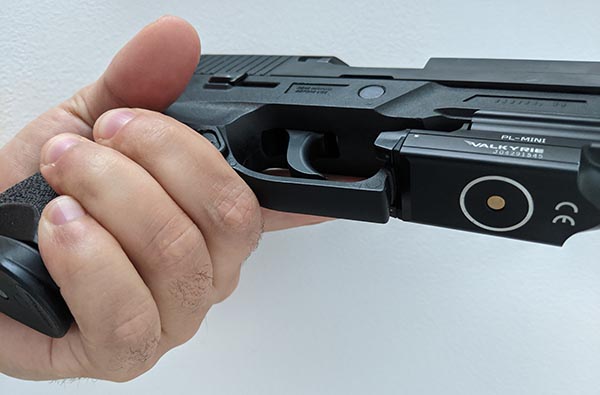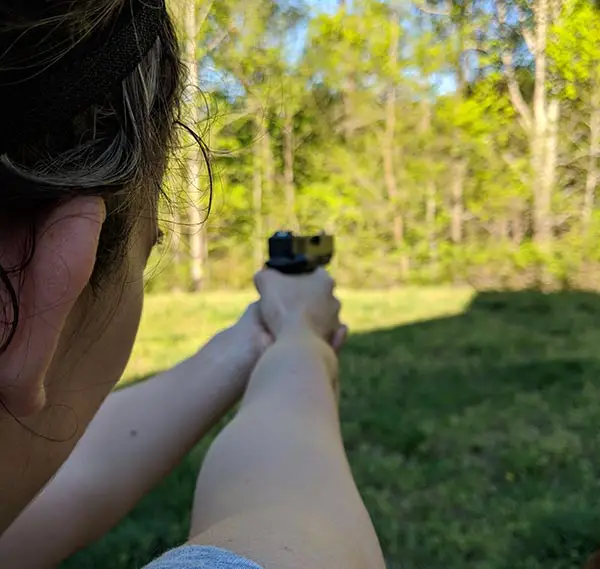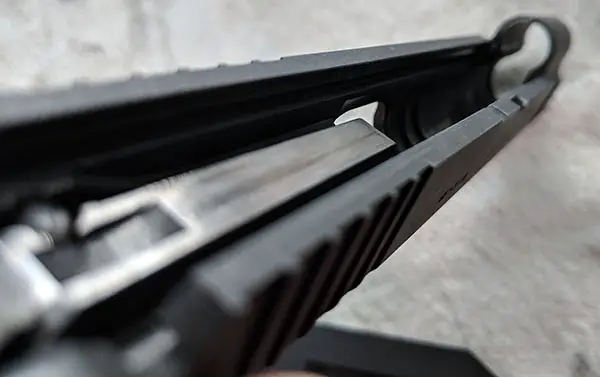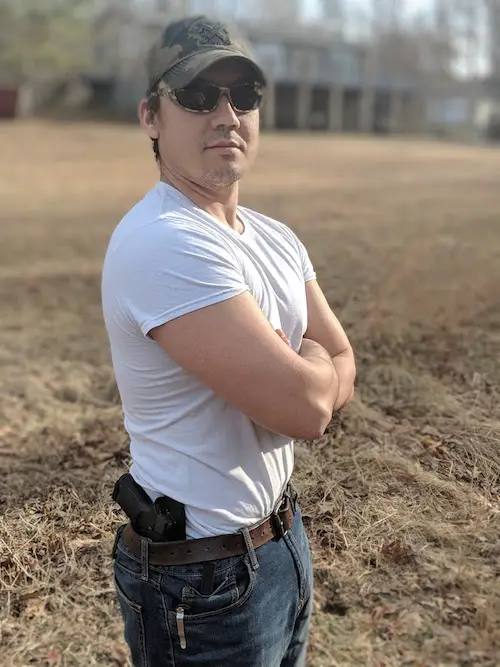Newer shooters often inquire about how hard to grip a pistol when shooting. Similar to shooting stance and posture, an individuals’ grip on a pistol will differ for a number of reasons. Anatomical makeup, injuries, grip strength, and forearm strength all contribute to variances in how a person grips their handgun.
Although your grip is important to accuracy, there is a common misconception about grip strength and accuracy. Today, I’ll cover which aspects of your grip require your attention and are critical to accuracy.
Table of Contents
Does Grip Strength Matter?
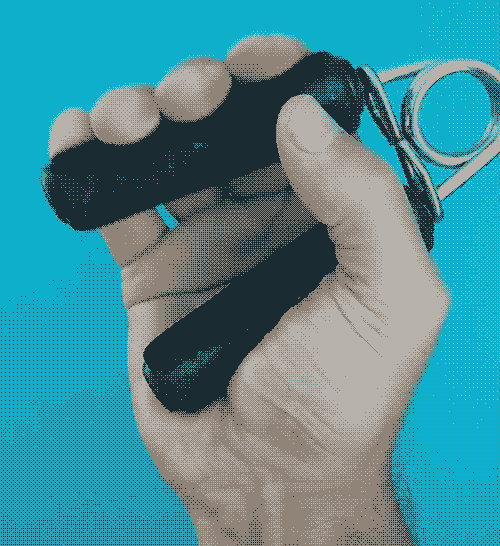
New shooters often get hung up on grip strength being a determining factor of accuracy. However, if that were indeed the case then every competition shooter would be in peak physical condition. That simply isn’t the case.
Furthermore, despite their anatomical and strength differences, there are female shooters who are just as accurate (if not more so) than their male counterparts. If how hard you grip a pistol, relative to grip strength is a factor, how is this possible?
The short answer is, grip strength plays a limited role in shot accuracy. Grip strength alone is not a determining factor for accurate shooting. Therefore, how hard to grip a pistol is more about equal application of pressure than raw grip and forearm strength.
Science Behind Grip Strength & Accuracy
The Indiana State Police conducted a study to measure grip strength in relation to qualifying scores. Overall, there was a general positive correlation between grip strength and qualifying score. However, those with the strongest grip did not perform the best.
“Results from this study revealed a positive association between handgrip strength and handgun qualifying score. However, many recruits with high grip strength values had lower qualifying scores than recruits closer to mean handgrip strength.”
According to the study, the strength of the support hand was actually the deciding factor on accuracy. Additionally, there seemed to be a point of diminishing returns with regard to dominant hand grip strength.
“While handgrip strength is significantly associated with shooting accuracy, increased strength above a given point does not appear to lead to increased accuracy.“
Therefore, even those with average grip strength are capable of accurate shooting. Unless there is a significant deficiency in your grip strength, you need not worry about developing your grip and forearm muscles. See how you stack up using this chart.
Proper Pistol Grip Size
Every instructor I’ve ever spoken with has said that the way a handgun feels in your hand is one of the most important factors when selecting a firearm. However, determining this can be a challenge especially if you’ve never held a gun before.
Furthermore, just because a pistol has an ergonomic design does not mean that it will be right for you. After all, Glock’s are the least ergonomic pistols in my opinion, but I shoot better with them than my other pistols. Go figure.
What Causes Variance In Pistol Grip Size
Pistol grips on pistols are about as unique as people who shoot them. Generally, smaller frame handguns will have a correspondingly sized grip. Additionally, single-stack magazines are more slender and subsequently lead to a less bulky pistol grip.
Backstraps, grip safeties, and grip panels can all contribute to the bulk of the pistol grip in your hand. Some manufacturers will mold the polymer to make the design more ergonomic. Additionally, some sub-compact model handguns have a portion of the grip integrated into the bottom of the magazine, just above the base plate.
Selecting The Proper Pistol Grip Size
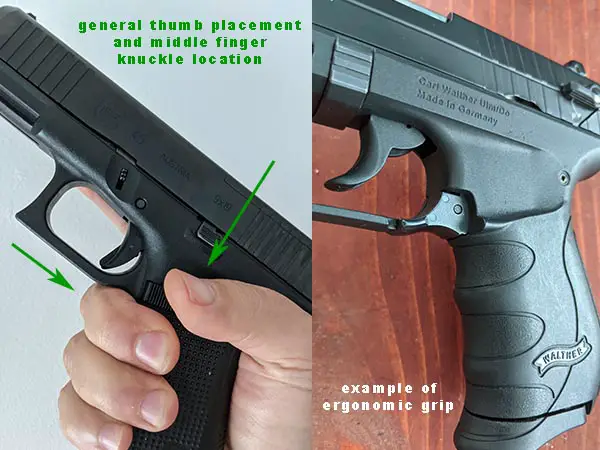
If you want a pistol grip that properly fits your hands, here are a few things to be on the lookout for. First and foremost, the grip should fit deep into your hand and not feel like you are relying on the last few digits on your fingers to hold the gun.
Generally speaking, the first knuckle on your middle finger should align with the bottom of the trigger guard. This ensures the handgun is not too big for your hands. However, this is not a hard and fast rule, but more a general guideline.
Second, the tip of your thumb should wrap around the grip and align with where the trigger guard mates up to the grip. This means the backstrap is seated firmly in the webbing between your thumb and index finger.
Finally, all of your fingers (middle through pinky) should find purchase on the handgun. Sometimes this means relying on a grip extension on the magazine. Regardless, all of your fingers should be gripping something.
How To Grip A Pistol – Where & How Hard
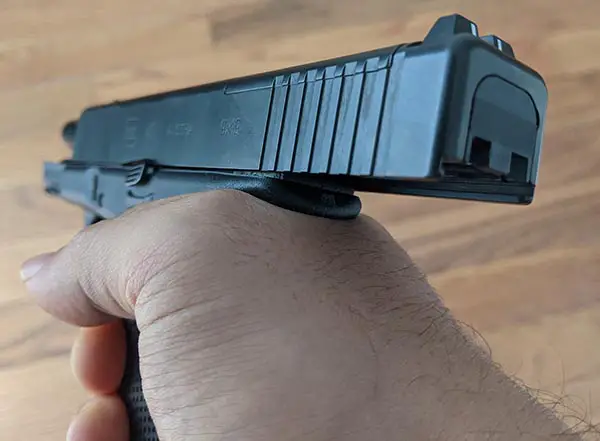
Alright, so now you understand how to select a gun with proper grip size. Next, I’m going to cover some tips for gripping the pistol. I highly suggest you read about different techniques for gripping a pistol before proceeding.
But, for those with an understanding of the thumbs forward grip, here are some key takeaways for improving your grip.
Where To Grip The Pistol With Your Dominant Hand
The goal when gripping a pistol is to minimize movement before, during, and after a round is fired. However, too many shooters fail to recognize that most of the movement occurs during the discharge of the round.
When a bullet is fired, the energy resulting from the reaction takes the path of least resistance. After the round is fired on a revolver or the slide has concluded it’s path of travel the energy is transferred to you.
Gripping the pistol high on the backstrap provides the greatest amount of leverage to manage recoil. The webbing between your thumb and index finger should sit as high on the backstrap as possible — but don’t let the slide bite you!
Your webbing is essentially a fulcrum. The longer the distance between your hand and the slide the greater the lever. Ultimately, this leads to increased muzzle rise when a shot is fired. Gripping high on the pistol can also help prevent the muzzle from dipping.
Grip Pressure When Shooting A Handgun
Although grip strength does have some bearing on accuracy, the application of pressure is more important. You should grip a pistol firmly while maintaining this pressure throughout the shooting process.
Gripping the pistol too firmly can lead to shaking or other movement when trying to achieve proper sight alignment. Additionally, you’ll fatigue easily and eventually relax your grip leading to errant shots.
Contrarily, gripping the pistol too lightly will usually lead to a sudden tensing of your grip just prior to the trigger break. Furthermore, a relaxed grip can make both achieving proper sight alignment and managing recoil difficult.
Finally, both the shooting and support hand should maintain the same amount of pressure when firing your handgun for the best results.
Parting Shots
Hopefully this article has clarified any questions you’ve had about how hard to grip a pistol. Remember the science shows that overwhelming grip strength does not necessarily mean increased accuracy. Instead focus on proper technique and equalizing the pressure of your grip to shoot better. If you’ve found this article helpful, please leave a comment or share with your network. Thanks for visiting the site. Come back soon for more tips, tricks, and analysis!
